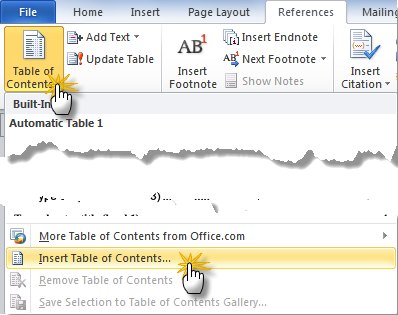

If you're experiencing this problem with one of your headings, here's a quick test: select and copy the text of the heading from the body of your document and paste it into Notepad or some other plain text editor (so none of the formatting follows). Microsoft Word can scan your document and find everything in the Heading 1 style and put that on the first level of your table of contents, put any Heading 2’s on the second level of your table of contents, and so on. You can select one of the automatically generated formats or choose to enter the titles of the sections manually. An automatic Table of Contents uses Styles to keep track of page numbers and section titles for you automatically.
#Windows word 2016 table of contents windows#
The TOC entries have their own Styles, so they won't pick up any formatting from the document itself. Go to the References Tab (Word 2010/2013 for Windows and Word 2016 for Mac) or the Document Elements tab (Office 2011 for Mac) in the ribbon at the top of the page. Step 3: Follow Step 2 to identify all remaining headings in the document. Hint: Consistently formatting your headers will ensure your table of contents is properly paginated. Step 2: Highlight the first heading and select Heading 1. Short version: If the ALL CAPS formatting of the heading is being performed by the Heading Style rather than the text having been typed in all capital letters, then the TOC will show it the way it was typed (lower-case or mixed case, depending on how it was typed). 2011 Microsoft Word Table of Contents (Mac) Step 1: Open your document and locate the Home tab.

She double-checked and triple-checked and could not for the life of her figure out why this was happening. Here's one reader's particularly infuriating dilemma: All of her headings were in ALL CAPS in the brief, but somehow one of them was showing up in the Table of Contents as mixed or lower case.


 0 kommentar(er)
0 kommentar(er)
